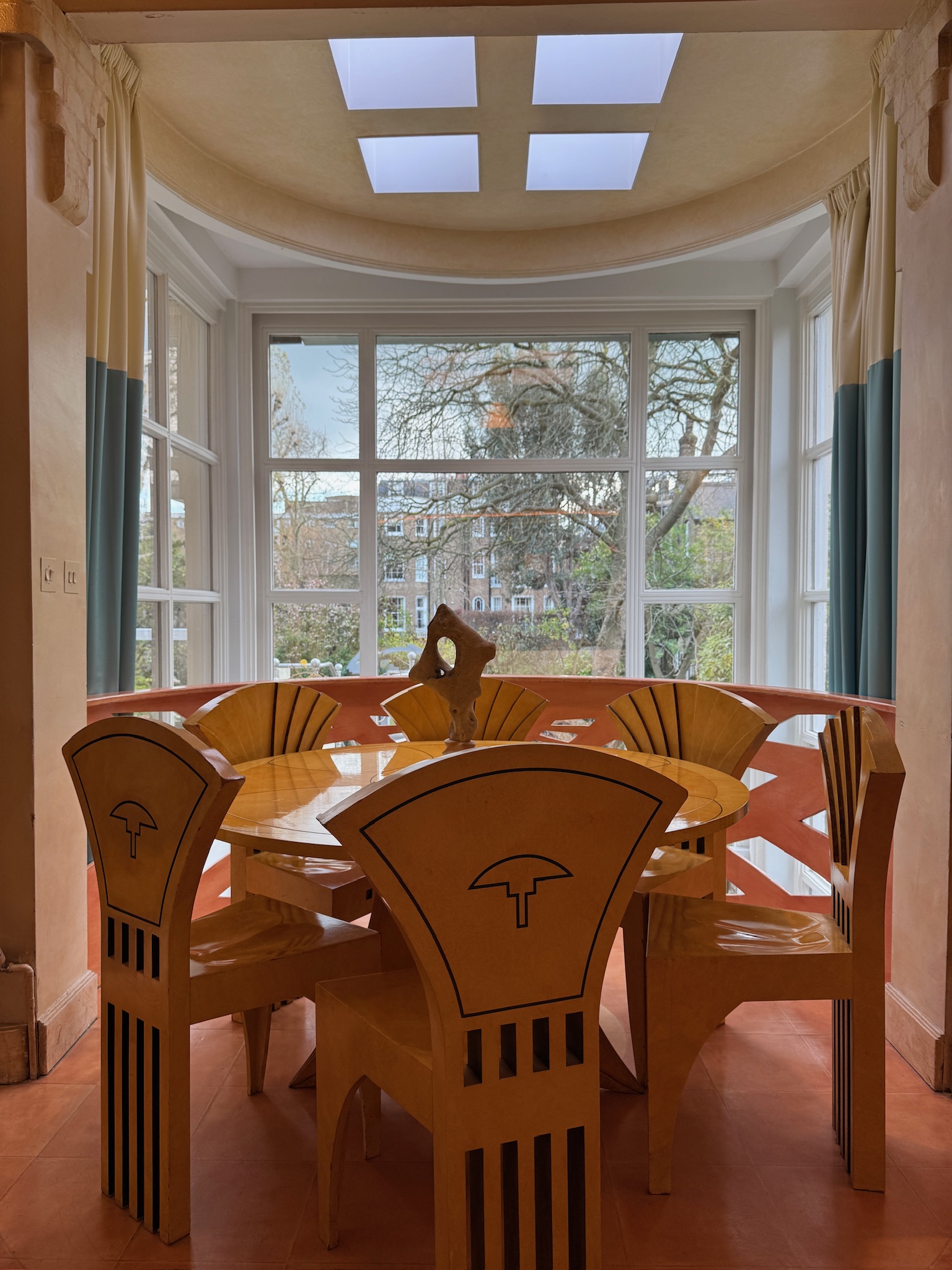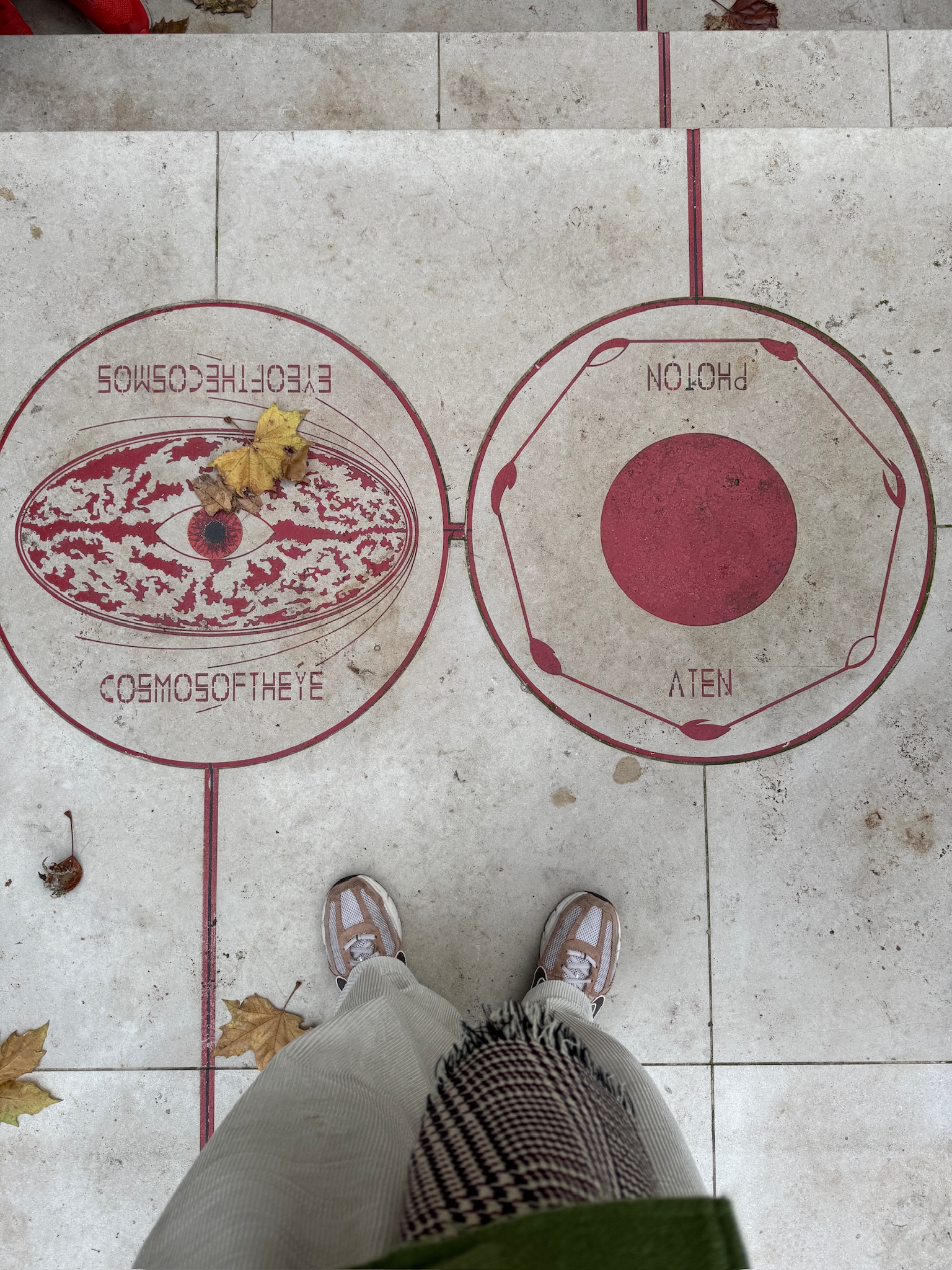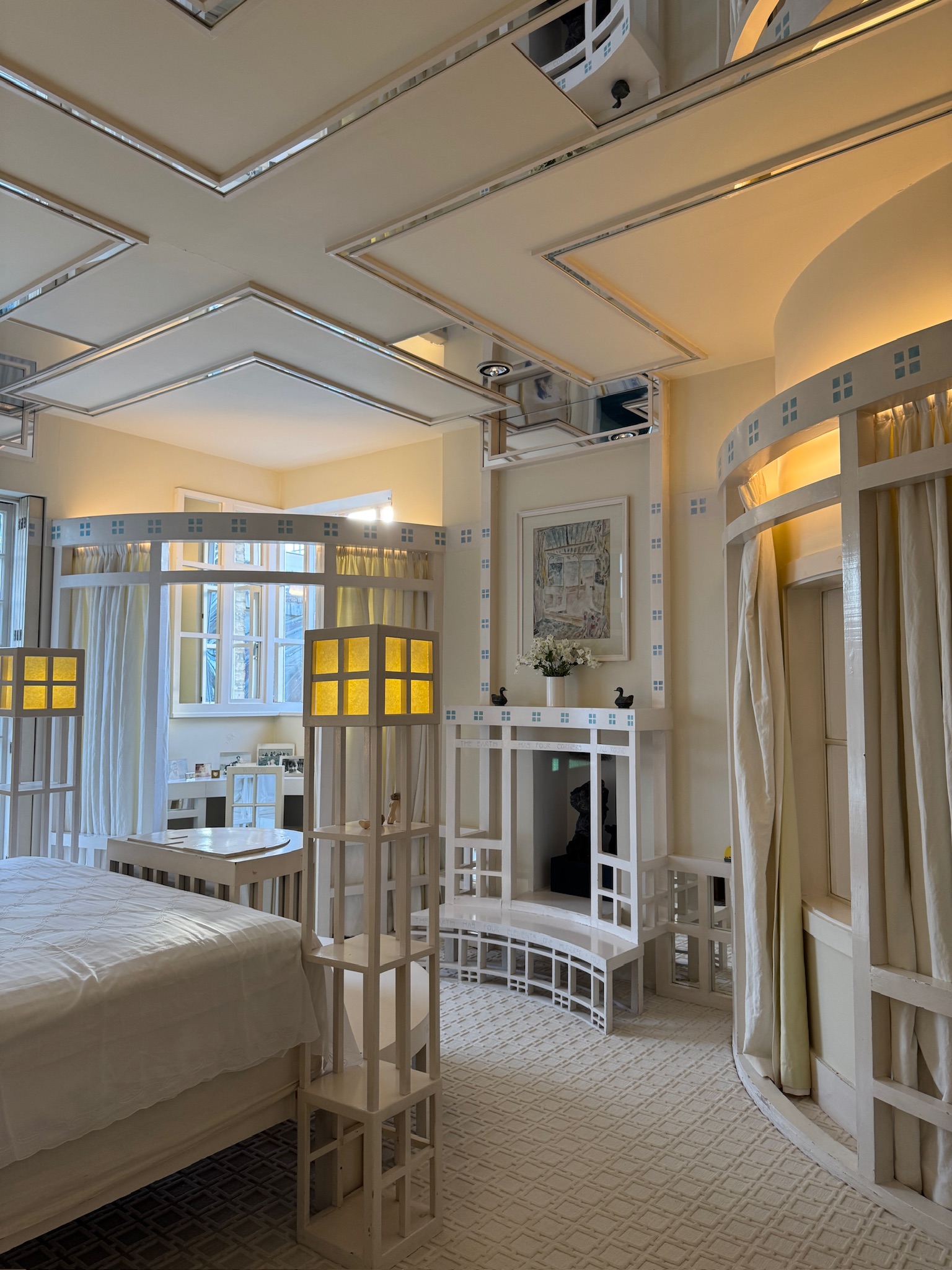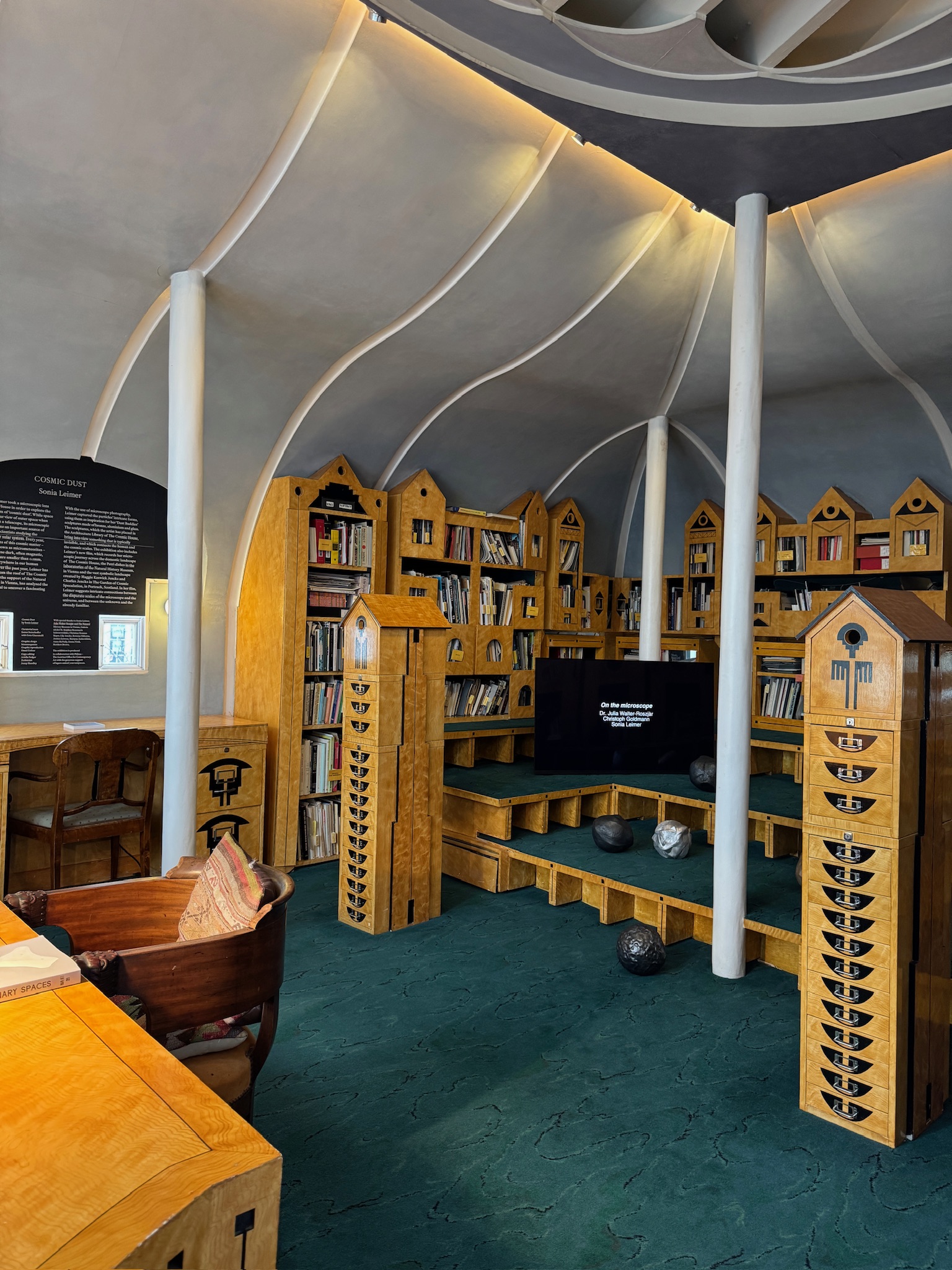The Cosmic House
In early December, our team had the wonderful and rare opportunity to visit the Cosmic House/Charles Jencks Foundation, former home of the notable architect and critic Charles Jencks.

Charles Jencks’ Cosmic House in Holland Park is a triumph of postmodern design, a physical manifesto of his belief in architecture as storytelling. Recently granted Grade I listed status, the house, originally designed in collaboration with architects Terry Farrell and Michael Graves, feels as relevant today as when it was completed in 1983. It’s a place where architecture, art, and science converge, each room offering layers of symbolism and wit, underpinned by Jencks’ belief in the cosmic order.



Walking through the Cosmic House, it becomes clear that this isn’t just a residence but a living, breathing narrative. The journey begins in the Drawing Room, a theatrical space defined by its celestial ceiling and intricate detailing that references myth, the zodiac, and astronomy. Here, you can sense Terry Farrell’s influence in the playful use of postmodern motifs, balanced by Graves’ focus on humanistic forms.




The Cosmic House is a built manifesto for Post-Modern-Ism. It represents an attempt to create a symbolic architecture for the modern era. It is a hybrid, collaborative design that embraces Classicism, the landscape of London commercial developers in the 1840s, Pop, Post-Modernism and modernity, one that blends comfort with the cosmology and ideas about the body and proportion with Dadaist details and layers of kitsch and irony. The Cosmic House is characterised by a complex symbolic programme that reveals itself as the visitor moves around the interior.






Upstairs, the Bedroom evokes a sense of sanctuary while subtly riffing on classical architectural forms. The symmetry of the design is offset by playful touches—Jencks’ hallmark ability to layer high ideas with humour. The Library is an undeniable highlight: an intellectual haven framed by Jencks’ brilliant archive of slides, books, and sketches that document his lifelong exploration of the relationship between architecture and the cosmos.



One of the most striking spaces is the Jacuzzi of the Gods, a cheeky yet profound nod to Jencks’ fascination with the interplay of humanity and the divine. Positioned under a skylight, it invites the idea of soaking not just in water but in celestial inspiration. The Time Garden, meanwhile, feels like stepping into a philosophical diorama—each element designed to provoke thoughts about history, myth, and our place in the universe.



Adding a new layer of intrigue, Tai Shani’s The World to Me Was a Secret: Caesious, Zinnober, Celadon, and Virescent exhibition is currently transforming The Cosmic House. Shani, who won the Turner Prize in 2019, brings her signature feminist surrealism into dialogue with Jencks’ architecture. Her works are woven seamlessly into the space, with their fluid, almost otherworldly forms, feel perfectly at home amidst the house’s celestial motifs and symbolic architecture. In this collaboration between artist and space, the exhibition amplifies The Cosmic House’s mission as a site of intellectual and artistic exploration.


The Jencks Foundation, which now stewards the house, has further extended this legacy through its archive, offering a deep dive into Jencks’ work, including drawings, manuscripts, and material exploring his lifelong inquiry into the connections between the universe and human creativity.
Writing for The Financial Times, Edwin Heathcote captured the house’s spirit perfectly, describing it as “a repository of ideas... a house that thinks, that provokes, that experiments.” It’s an apt summary of a space that doesn’t just function as a home but challenges the visitor to engage with the deeper meanings of design.

Beyond its aesthetic triumphs, The Cosmic House is also an architectural dialogue—a collaboration between Jencks, Farrell, Graves, and a host of craftsmen and artists who contributed to its intricate detailing. Together, they created a home that embodies postmodernism at its most daring and optimistic, filled with narrative but never weighed down by it.


Visiting the house today, with Shani’s exhibition in full bloom, is a reminder of design’s capacity to provoke and inspire. It’s a place that makes you pause, reflect, and reconsider the boundaries of architecture itself.
For those with a love of design, philosophy, or simply the beautifully unexpected, The Cosmic House is essential. It isn’t just a visit—it’s an encounter with ideas, with wit, and with a singular vision of what architecture can be.



